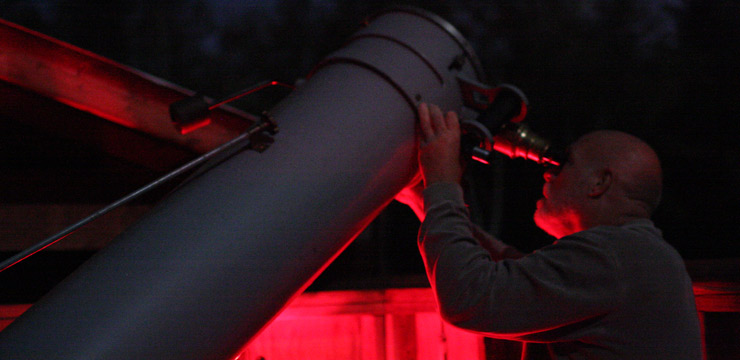
2012 LZ1: Tracking A Fast Moving Near Earth Asteroid Across the Sky
June 2012 :

A good write up of this relatively large Near Earth Asteroid (NEA) encounter can be found at this URL: http://www.space.com/16263-asteroid-2012lz1-size-earth-flyby.html
An object of this nature, passing so close to the earth, moves across the sky relatively quickly. In this composite of 4 images taken approximately 2 to 3 minutes apart, the asteroid travelled about half the field of view of my CCD on the Meade 14" SCT operating at f/6, or about 8 arc-minutes. In order to place the telescope on the correct coordinates at the correct time requires a good prediction of where 2012 LZ1 will be at a specific time (These images were taken on the morning of June 15, 2012 from Scituate Observatory).
NASA's portal for NEOs (Near Earth Objects - includes comets and asteroids) is a good resource for this purpose. You must create the portal's information for the specific telescope's topographic location on the surface of the earth, usually your observing site. This is necessary because of the rapid motion of the object across the sky and nearness to earth and parallax must be taken into account in order to get the corrected RA and DEC coordinates to track the object with your telescope. My NASA Horizons web portal was used to generate an ephemeris of the NEA's position for the date at 15 minute intervals. Using this data and interpolating the position between time intervals, Remotely, via an Internet web browser connection, I entered the coordinates into the software server interface that controls the positioning of the telescope and taking the images with the CCD camera. Later, during the day, I can user other software to reduce multiple CCD image data to astrometric positions that can subsequently be used to compute and refine the orbital elements for the NEA.
Explore more on Near Earth Objects
The Minor Planet Center in Cambridge, MA announces newly discovered NEOs and collects astrometric data for all known and newly discovered asteroids and comets.
www.minorplanetcenter.org/iau/MPEph/MPEph.html
Use the JPL Horizons web portal to plot ephemeris for observations:
ssd.jpl.nasa.gov/horizons.cgi
Here is the NASA Near Earth Object Program web page that shows quite a few NEOs that are known:
neo.jpl.nasa.gov/ca/
For updates on NEO discoveries from the Pan-STARRS1 survey telescope, follow on Twitter:
twitter.com/PS1NEOwatch
Of course, ones that are NOT known are the really interesting ones. The Minor Planet Center NEO confirmation page will give info on latest discovered that need follow up imaging and astrometry to see just how close they will come to earth. The response time for these objects is often just a matter of days or they may be gone before sufficient data is collected to derive a reliable orbit.
http://www.minorplanetcenter.net/iau/NEO/ToConfirm.html
Related Topics




